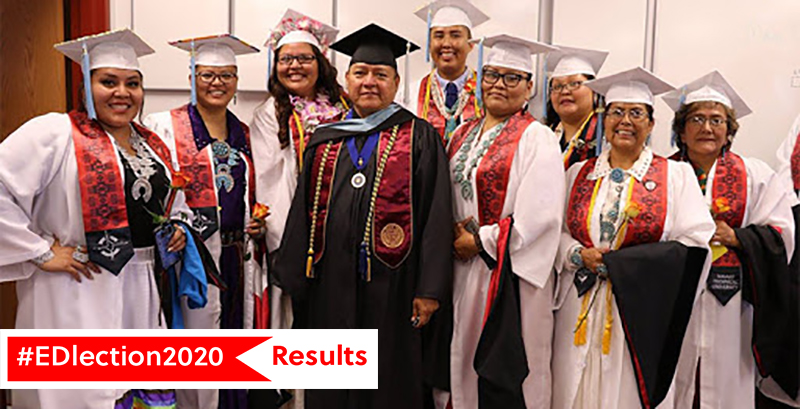New Mexico Voters Approve $156M Bond for Higher Ed, Tribal Schools and Schools for the Visually and Hearing-Impaired

2020’s KEY EDUCATION VOTES: See our full coverage of the 46 races that could reshape America’s schools following Election Day — and get the latest updates on state policies and students’ challenges during the pandemic by signing up for The 74 Newsletter.
A strong majority of the New Mexico electorate greenlit bonds for education infrastructure in Tuesday’s election, according to unofficial race results posted Wednesday by the New Mexico Secretary of State’s office.
Sixty-five percent of voters, or 522,057 people, chose “yes” for Bond Measure C, one of three statewide bond propositions that passed this year. A record-breaking number of people cast ballots across New Mexico in 2020.
The education-related measure will channel roughly $156.3 in capital improvement funding to public higher education institutions, tribal schools and schools for the visually and hearing-impaired.
Lawmakers have already outlined how the money will be spent, including $5.3 million for dining hall construction at the state-run New Mexico School for the Deaf and $1.4 million for a science building at Navajo Technical University, the country’s largest tribal college in the country, among other projects.
Two years ago, New Mexico voters also easily approved three other education-related bond measures that provided $150 million for improvements at state colleges, tribal schools and municipal libraries; new school buses and air conditioning for existing buses; and new books, electronics and broadband upgrades for K-12 public schools.
That same year, a judge ruled that the state was failing its children by not providing adequate public schools funding. Advocates hailed the decision “as a ‘landmark’ ruling that could have implications for underfunded education systems around the country,” HuffPost reported.
In New Mexico, one in four kids live in poverty, according to a 2020 report from the Annie E. Casey Foundation. An overwhelming 76 percent of fourth-graders in the state lack reading proficiency and 79 percent of eighth-graders aren’t proficient in math — numbers that are 10 to 12 percentage points higher than the national average and which have barely improved over the last decade.
2020’s KEY EDUCATION VOTES: See our full coverage of the 46 races that could reshape America’s schools following Election Day — and get the latest updates on state policies and students’ challenges during the pandemic by signing up for The 74 Newsletter.
Get stories like these delivered straight to your inbox. Sign up for The 74 Newsletter

;)
